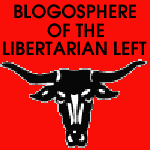Book Review: Cyber Conflict and Global Politics
Athina Karatzogianni, ed. Cyber Conflict and Global Politics (London and New York: Routledge, 2009).
Athina Karatzogianni's work first came to my attention through her participation in the P2P Research email list. Her main area of research these past several years has been a major interest of mine as well: the intersection of networked communications technology with asymmetric warfare to form networked resistance. I've been interested in what is variously called "netwar" and "networked resistance" since I stumbled across work on the subject by Rand analysists David Ronfeldt et al. That model of conflict has since been further developed in William Lind's work on Fourth Generation Warfare, and on rhizome by Jeff Vail. Having read Samuel Huntington's analysis of the crisis of governability not long before I came across Ronfeldt, I was struck by the potential for networked resistance to become the stuff of elite nightmares. I recently applied that same model to labor relations in a blog post that was later expanded into Chapter Nine of my forthcoming org theory book.
Karatzogianni's work is a welcome addition to the literature on networked resistance. The theme of her latest effort in this field, as stated in her introduction, is the emerging "counter-hegemonic account of globalization" faced by neo-liberal governments and institutions.
Thanks to the Internet and new media associated with it, governments are finding it increasingly difficult to shape public consciousness. The proliferation of unofficial and unauthorized blogs by American soliders in Iraq, and by Iraqis themselves, is just one example of the phenomenon. As a result of such alternative news media, with their many-to-many communications capabilities as a rival to the old broadcast communications model, it is possible to challenge the official account with a counter-narrative, an alternative framing for events, to the public. Karatzogianni's contribution, "How small are small numbers in cyberspace?", mentions one especially promising development associated with the new media: the tendency of establishment media to "look over their shoulders" as their accounts are challenged by the alternative media. An example that comes to mind is the role of Al Giordano's Narco News Bulletin in reporting on what was really going on in Venezuela during the 2002 coup, while the Associated Press was rewriting U.S. embassy handouts as straight news.
And as Karatzogianni is the latest of many to remark on, the Internet has played a central role in the organization of the peace and antiglobalization movements.
Proxy servers and file-sharing networks make it possible for dissidents to evade government surveillance in authoritarian countries like China (and increasingly the U.S., for that matter).
These different themes, stated in Karatzogianni's Introduction, are developed individually by the different contributors.
Unfortunately, the Internet and network organization are two-edged swords, offering new capabilities to states and other centralizing institutions as well as grass-roots resistance movements. This ambivalence is a recurring theme throughout the book. Hall Gardener's article examines the influence of networked computer technology on the balance of power between center and resistance, and finds no easy answer. If the Internet offers tools for disrupting power, it also offers new tools for surveillance and control. And as Andrew Hoskins and Ben O'Loughlin show, asymmetric warfare techniques are not solely the weapon of the weak. Besides being used by violent non-state actors like Al Qaeda, they are used as well by state actors. This is the subject of Michael Dartnell's article, as well. Internet propaganda is widely used for Al Qaeda propaganda, decapitation videos by Al Qaeda Iraq, etc.
The Internet is also used by state actors against other state actors. One example is China's cyberwar preparations for disrupting America's global C3I network. Another is the use of the Internet to for similar low-grade conflict short of war, across the Taiwan straits (the subject of Gary Rawnsley's article), Russia's cyberwar against mini-states on its periphery.
Nevertheless, I think the net benefit of network technology is clearly on the side of decentralizing forces and against the forces of central control. This is demonstrated by Maria Touri's article is one of my favorite parts of the book, "Transparency and accountability in the age of cyberpolitics: the role of blogs in framing conflict." Another excellent article the same general theme is Anastasia Kavada's "The Internet and decentralized architectures: Email lists and the organizing process of the European Social Forum." The subtitle is pretty indicative of the subject matter: the use of the Internet and of particular network formats like email as an organizing tool for loose coalitions of affinity groups. My favorite article of all is Graham Meikle's "Electronic civil disobedience and symbolic power," which relies heavily on the work of Ronfeldt and Arquilla. Meikle focuses on disruptive or even clearly illegal activities like cracking institutional networks, which at their most violent fade into the category of terrorism. But a milder version of the same thing is the symbolic attacks on global corporate brands described by Naomi Klein, the McLibel defendants' propaganda campaign against McDonalds, or Charles Kernaghan's public embarrassment of Kathie Lee Gifford. One of the more interesting developments Meikle discusses, from my perspective of networked resistance to corporate power, is the "virtual sit-in"--shutting down official corporate and state websites and communication systems with excessive traffic. It's essentially what Ronfeldt et al described as "swarming" ten years before.
The book includes a contribution by another P2P Research list member, Michel Bauwens of the Foundation for P2P Alternatives: "Some notes on the social antagonism in netarchical capitalism." It's the subject of some of his best writing: netarchical capitalism as an attempt to enclose the digital commons and capture profit from it, and the crisis of realization it faces in attempting to do so.
This is a book that makes significant contributions to a significant field of inquiry. If you're seriously interested in the political implications of network organization, you need to read this book.
Athina Karatzogianni's work first came to my attention through her participation in the P2P Research email list. Her main area of research these past several years has been a major interest of mine as well: the intersection of networked communications technology with asymmetric warfare to form networked resistance. I've been interested in what is variously called "netwar" and "networked resistance" since I stumbled across work on the subject by Rand analysists David Ronfeldt et al. That model of conflict has since been further developed in William Lind's work on Fourth Generation Warfare, and on rhizome by Jeff Vail. Having read Samuel Huntington's analysis of the crisis of governability not long before I came across Ronfeldt, I was struck by the potential for networked resistance to become the stuff of elite nightmares. I recently applied that same model to labor relations in a blog post that was later expanded into Chapter Nine of my forthcoming org theory book.
Karatzogianni's work is a welcome addition to the literature on networked resistance. The theme of her latest effort in this field, as stated in her introduction, is the emerging "counter-hegemonic account of globalization" faced by neo-liberal governments and institutions.
One of the interesting sides to the argument is that the information revolution is altering the nature of conflict by strengthening network forms of organization over hierarchical forms. In contrast to the closure of space, the violence and identity divide found in ethnoreligious discourses, sociopolitical movements seem to rely more on networking and rhizomatic structures. U.S. power is increasingly faced with resistance movements operating on a network model and utilizing new information technologies.
Thanks to the Internet and new media associated with it, governments are finding it increasingly difficult to shape public consciousness. The proliferation of unofficial and unauthorized blogs by American soliders in Iraq, and by Iraqis themselves, is just one example of the phenomenon. As a result of such alternative news media, with their many-to-many communications capabilities as a rival to the old broadcast communications model, it is possible to challenge the official account with a counter-narrative, an alternative framing for events, to the public. Karatzogianni's contribution, "How small are small numbers in cyberspace?", mentions one especially promising development associated with the new media: the tendency of establishment media to "look over their shoulders" as their accounts are challenged by the alternative media. An example that comes to mind is the role of Al Giordano's Narco News Bulletin in reporting on what was really going on in Venezuela during the 2002 coup, while the Associated Press was rewriting U.S. embassy handouts as straight news.
And as Karatzogianni is the latest of many to remark on, the Internet has played a central role in the organization of the peace and antiglobalization movements.
Before and during the war in Iraq, mobilization structures appear to have been greatly affected by the Internet. Peace groups organized demonstrations and events through the Internet, to the effect that ten million people protested against the war globally, with the net speeding up mobilization remarkably. It helped mobilization in loose coalitions of small groups that organized very quickly, at the same time reserving the particularity of distinct groups in network forms of organization. Anti-war groups used email lists and websites, group text messages and chatrooms to organize protests, and in some cases, to engage in symbolic hacking against the opposite viewpoint.
Proxy servers and file-sharing networks make it possible for dissidents to evade government surveillance in authoritarian countries like China (and increasingly the U.S., for that matter).
These different themes, stated in Karatzogianni's Introduction, are developed individually by the different contributors.
Unfortunately, the Internet and network organization are two-edged swords, offering new capabilities to states and other centralizing institutions as well as grass-roots resistance movements. This ambivalence is a recurring theme throughout the book. Hall Gardener's article examines the influence of networked computer technology on the balance of power between center and resistance, and finds no easy answer. If the Internet offers tools for disrupting power, it also offers new tools for surveillance and control. And as Andrew Hoskins and Ben O'Loughlin show, asymmetric warfare techniques are not solely the weapon of the weak. Besides being used by violent non-state actors like Al Qaeda, they are used as well by state actors. This is the subject of Michael Dartnell's article, as well. Internet propaganda is widely used for Al Qaeda propaganda, decapitation videos by Al Qaeda Iraq, etc.
The Internet is also used by state actors against other state actors. One example is China's cyberwar preparations for disrupting America's global C3I network. Another is the use of the Internet to for similar low-grade conflict short of war, across the Taiwan straits (the subject of Gary Rawnsley's article), Russia's cyberwar against mini-states on its periphery.
Nevertheless, I think the net benefit of network technology is clearly on the side of decentralizing forces and against the forces of central control. This is demonstrated by Maria Touri's article is one of my favorite parts of the book, "Transparency and accountability in the age of cyberpolitics: the role of blogs in framing conflict." Another excellent article the same general theme is Anastasia Kavada's "The Internet and decentralized architectures: Email lists and the organizing process of the European Social Forum." The subtitle is pretty indicative of the subject matter: the use of the Internet and of particular network formats like email as an organizing tool for loose coalitions of affinity groups. My favorite article of all is Graham Meikle's "Electronic civil disobedience and symbolic power," which relies heavily on the work of Ronfeldt and Arquilla. Meikle focuses on disruptive or even clearly illegal activities like cracking institutional networks, which at their most violent fade into the category of terrorism. But a milder version of the same thing is the symbolic attacks on global corporate brands described by Naomi Klein, the McLibel defendants' propaganda campaign against McDonalds, or Charles Kernaghan's public embarrassment of Kathie Lee Gifford. One of the more interesting developments Meikle discusses, from my perspective of networked resistance to corporate power, is the "virtual sit-in"--shutting down official corporate and state websites and communication systems with excessive traffic. It's essentially what Ronfeldt et al described as "swarming" ten years before.
The book includes a contribution by another P2P Research list member, Michel Bauwens of the Foundation for P2P Alternatives: "Some notes on the social antagonism in netarchical capitalism." It's the subject of some of his best writing: netarchical capitalism as an attempt to enclose the digital commons and capture profit from it, and the crisis of realization it faces in attempting to do so.
This is a book that makes significant contributions to a significant field of inquiry. If you're seriously interested in the political implications of network organization, you need to read this book.









5 Comments:
All well and good, except that there has been precious little evidence of "cyber-war" by state actors. The Estonia incident was show to pretty much be bogus. What I'd really be worrying about from states is not "cyber-war" but attempts to regulate the internet. This is why "Net Neutrality" worries me.
Except Al Qaeda is a state creation, a false flag operation. See the BBC's "The Power of Nightmares."
Kevin, congratulations on your new position.
Like most, I won't be able to afford to read this book at £70.00 ($130). It may not be very tactful, but I really think it's worth noting that the publisher and price ensure that very few will ever read it, as Michel Bauwens himself has mentioned. Athina has stated before that she has a contract, but that won't result in any more people reading it, or paying that sum, or learning from it, or improving upon it.
I am curious if there is any mention of nonviolent struggle--theory and practice--in modern times as documented (and encouraged/advised) by Gene Sharp, Robert Helvey, and others connected to that body of work. Their strategic and tactical framework puts the cyber-conflict in a broader context, if not also showing where and how it's most likely to be effective when it comes to removing or supplanting a pillar of political power.
-- Stan
Stan: Meikle's chapter on electronic civil disobedience refers to Sharp on the sit-in as a tactic in the Civil Rights movement.
I agree with the problem of academic publishers' pricing. I thought some $80 was outrageous for Prychitko's *Marxism and Self-Management*, which as I recall was 200pp and change. And clearly that sort of thing couldn't exist without extreme copyright abuse. My copy of Prychitko, like most such products of the academic publishing industry that I own, is xeroxed from an interlibrary loan copy.
I agree. $80 is just too much.
Post a Comment
<< Home